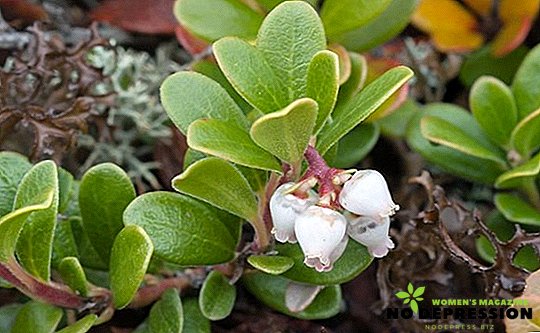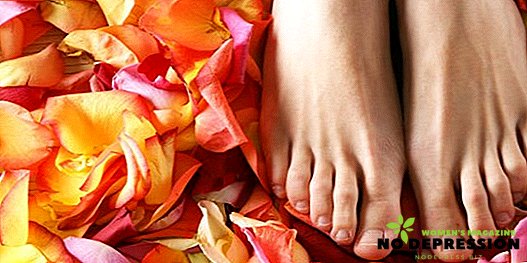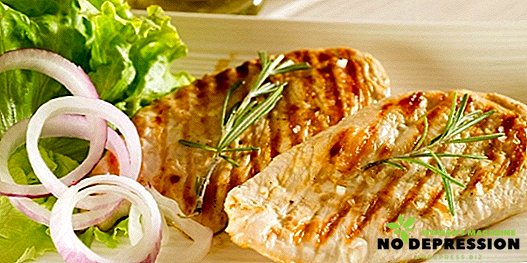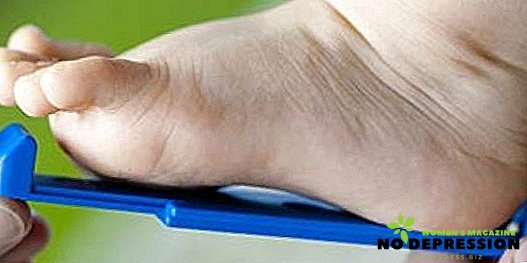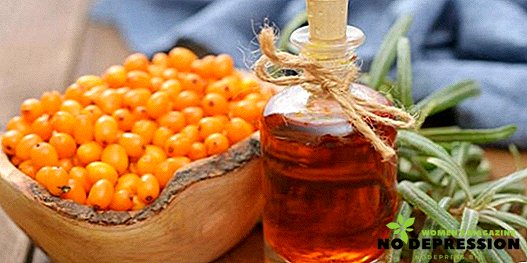Despite all the achievements of science and progress, the fungus, as a disease, can not be removed. This is due to its vitality and habitat conditions. The fungus needs moisture and heat. While they are there, the fungus will exist.
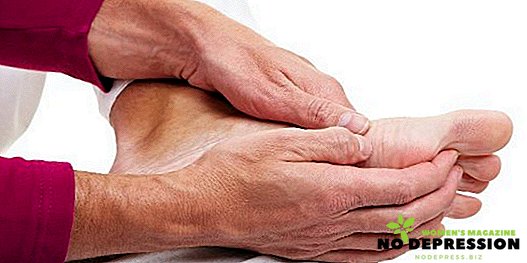
Types of nail fungus
Dermatophytes
They affect the body against the background of reduced immunity. In extremely rare cases - in a person with a high level of immunity.
The source of infection is soil, sometimes people or animals. The basis of the entire colony is mycelium. It is attached to the nail by processes (hyphae) that grow into tissues and destroy the structure.
Subspecies of dermatophytes and features of the course of the disease:
- Trihofiton red. The disease proceeds according to the standard: the tip of the nail becomes infected, followed by advancement to the root. It is common for the fungus to infect several fingers simultaneously. The nail changes shape, thickening and coarse. There is a stratification. The skin around the affected nail also becomes infected - it dries, peels off;
- Trichophyton interdigital. The source of the disease - rooms with high humidity levels. Most often affects the nails of the toes. Localized on the surface of the nail and the skin between the fingers. Whitish spots are formed on the plates;
- Other types of dermatophytes affect the body against the background of other diseases in 5% of all cases.
Yeast fungi of the genus Candida
They are in fact present on the skin and mucous membranes of humans. You do not have to face the carrier of the disease. It is enough to have a weakened immune system so that the mushrooms occupy the nail plate.
The peculiarity of the course of the disease - the nail is not affected at the end, but at the base, expanding in the direction of growth, since Candida does not form mycelium and cannot be attached to the surface at the edge.
Moldy
Pathogens of onychomycosis is more than 40 species. It is difficult to diagnose the defeat of this type of fungi - the symptoms differ little from the symptoms of affection by dermatophytes.
 However, the treatment is fundamentally different. It is possible to diagnose infection by mold fungi only as a result of bacteriological analysis.
However, the treatment is fundamentally different. It is possible to diagnose infection by mold fungi only as a result of bacteriological analysis.
The subspecies is able to release hyphae and quickly destroy the nail. In addition, in conditions of a critical decrease in the patient's immunity, mold fungi are able to penetrate into the body and infect organs.
There are 2 additional classifications.
Classification by disease focus:
- vesicular fungi. The lower part of the foot is affected first. Blisters and swelling appear on the skin. This type of fungus easily joins a bacterial infection;
- membrane. Localized in the area between the little finger and the "ringless" toe - the skin cracks, peels large scales. May be supplemented with a bacterial infection;
- moccasinopod. The disease is localized on the heel or sole of the foot, gradually spreading upwards.
Classification by the shape of the deformation of the nail layer:
- normotrophic. Nail changes color, but retains its shape. Stripes and / or spots of yellow and white shades appear;
- hypertrophic. The nail structure and shape are deformed: the nail becomes thick, begins to crumble, delivers painful sensations during movement;
- atrophic. Nail "lose weight." The plate becomes very thin, dull, white spots and stripes appear on it.

Toenail fungus: signs of infection
The main visible and palpable symptoms are:
- itching of the skin, especially after bathing;
- odor;
- peeling of the skin;
- the nail has changed in color. As a rule, the entire nail plate acquires a uniform shade. Color depends on the subspecies of the fungus, but most often - yellow;
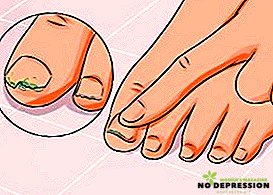
- the surface of the nail becomes rough;
- a bundle on the tip of the nail. It occupies the entire open length of the nail and gradually deepens;
- white spots under the nail plate;
- dullness;
- many burrs;
- detachment of the entire nail;
- nail damage on a large scale;
- small grooves on the entire outer surface of the plate;
- nail plate thickens, and the lower layers crumble.
Is it possible to completely cure the toenail fungus? It is possible, but not always. An inherited disease that cannot be changed is a living example. It progresses over the years, deforming the shape of the nail.
To ascertain the fact of a hereditary disease can only be a medical consultation.
How to effectively cure the fungus of toenails: medical treatment
To select medications, it is necessary to accurately diagnose the type of fungus, the stage of the disease and the type of skin. This can be done exclusively by a doctor.
Depending on the test results and the stage of the disease, the doctor will prescribe either drugs of local action - ointments or varnishes, or a complex of local and systemic medicines.
Systemic drugs give a high load on the liver. We will have to give up everything that complicates the work of the body - alcohol, fatty foods, etc. This is necessary to eliminate the double load.
Popular varnishes against fungi:
- Batrafen;
- Loceryl;
- Mikozan;
- Cyclopyroxolamine.
Ointments, creams, sprays:
- Atifin;
- Bisofin;
- Zalain;
- Lamitel;
- Nizoral;
- Fundizol;
- Exoderil.
Preparations for systemic use:
- Itraconazole-Orungal and analogues;
- Ketoconazole-Nizoral and analogues;
- Terbinafin and analogues.

There are special tools for removing the nail, without surgery: Nail or its equivalent - Nail.
Each drug acts only on a certain type of mycosis. Even the most advanced means will not work if they are not in a "pair" with a fungus.
How to cure nail fungus on the legs: folk remedies
Vinegar - the most effective method in the initial stages.
 Baths: a glass of vinegar (9%) on a bath of water. As a rule, use a basin in which the feet are placed. Water poured on the ankle. First, it provides the proper concentration of vinegar in the water.
Baths: a glass of vinegar (9%) on a bath of water. As a rule, use a basin in which the feet are placed. Water poured on the ankle. First, it provides the proper concentration of vinegar in the water.
Secondly, the skin is exposed to a chemical burn. Before the bath, it is required to trim the nails and remove the upper layers of the skin with a pumice stone or a brush. This will ensure maximum "impregnation".
If there are microdamages on the legs, the procedure will cause pain. Duration - 15 minutes.
Acetic lotions - soak cotton wool / cotton pad with vinegar and attach to the problem area for 10-15 minutes. It is more effective to apply after baths.
Ointment: 2 portions of acetic acid (70%) are mixed with glycerin, olive oil and dimethyl phthalate, one portion each. Apply with a cotton swab for 8 hours every day, on clean feet. Wash off with soap.
 To combat the advanced stage, hydrogen peroxide is used. The legs are steamed in a soda bath (for 1 l. - 1 tsp.), Then, on problem areas, cotton soaked with peroxide is applied, covered with polyethylene and rewound with a bandage. The duration of the compress - 40-60 minutes.
To combat the advanced stage, hydrogen peroxide is used. The legs are steamed in a soda bath (for 1 l. - 1 tsp.), Then, on problem areas, cotton soaked with peroxide is applied, covered with polyethylene and rewound with a bandage. The duration of the compress - 40-60 minutes.
Ammonia. For a glass of water - 1 tbsp. alcohol. Soak a fleece or piece of gauze and apply overnight as a compress.
Boric acid. At bedtime, the feet are steamed, sprinkled with powder, and clean socks are put on.
Baking soda. Add a little water to it until a slurry is formed and apply the mixture for 15-20 minutes to the problem area.
Garlic. The affected area is rubbed with a cut garlic clove. Vegetable gruel can be used as a compress.
Iodine. Just carefully lubricate the problem area.
What can quickly cure nail fungus on the legs
Comprehensive treatment, consisting of systemic antimycotic drugs and means of local action, will be required.
The most effective systemic drugs of a wide range:
- Diflucan;
- Itrazol;
- Itraconazole;
- Canditral;
- Ketoconazole;
- Lamisil;
- Mycozoral;
- Orungal;
- Terbizil and their analogues.

Medications for local action:
- Clotrimazole;
- Miconorm;
- Thermikon;
- Exoderil.
It is recommended to combine traditional medicine and medicines.
Features of the treatment of running fungus
First of all - the diagnosis and consultation with a doctor.
Comprehensive treatment will be required, which means:
- taking a wide range of drugs inside;
- narrow focus directly on the nail;

- immunity strengthening;
- taking drugs that support the body while taking basic medicines;
- strictly adhere to the instructions.
The medicine is designed in such a way that when treating a single disease, a blow is struck at a healthy organ. Most often - the liver and intestines. You need to be prepared for the consequences and discuss in advance with the doctor the side effects of medications. Some cause allergies or are unacceptable in certain diseases, during pregnancy, etc.
If the stage is critical and nothing helps, the last option remains - complete removal of the nail plate, but this does not always guarantee relief from the disease.
What is dangerous is not cured onychomycosis?
The disease can go into a stage where most of the available funds will no longer act on the fungi — spores will penetrate deep into the tissues and the drugs simply cannot reach them.
 The deformation of the plate shape leads to a deep ingrowth into the skin of the nail, up to the cutting of tissues.
The deformation of the plate shape leads to a deep ingrowth into the skin of the nail, up to the cutting of tissues.
The result - hellish pain and inflammation in the tissues of the toes. And the nail and the tissue around the nail will start to rot.
Launched the stage of deformation of the nail plate makes it impossible to wear shoes. Any shoes, even a little squeezing fingers will cause great pain. Even just walking around the house barefoot will hurt.
Stern of that:
- general decrease in immunity;
- the spread of fungus in the blood;
- the occurrence of dermatitis and eczema;
- inflammation of the mucous membranes.
Prevention
Antifungal prophylaxis is based on the following factors:
- personal hygiene. Wash your feet daily and with soap. Cut nails in a timely manner, do not pull out burrs, use only personal tools for a pedicure. If you had to take someone else's - sterilize them. Wear clean socks. Do not use used shoes;
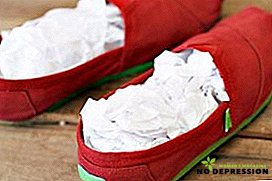
- shoe care. Shoes must be dried in a timely manner, thereby not allowing conditions to be formed that are comfortable for the reproduction of fungi. To get the insoles and dry them separately, dry the shoes with special dryers or completely unlace them, placing them under the battery;
- certainly, not to visit baths and saunas is not an option. Give preference to those institutions that have reviews. If possible, ask what and how often the floors are washed. Be sure to use only your things, and in particular - interchangeable rubber slippers;
- In order to avoid re-infection, throw away the shoes that the patient wore during the course of the disease. If there is no such possibility, sterilize it from the inside;
- if the immunity is weakened or there are microdamages on the feet - try not to walk barefoot and avoid situations in which the fungus can get on you.
Reviews on the treatment of nail fungus on the legs
He successfully cured the fungus and thought he wouldn’t meet again, but no! Repeated meeting in winter shoes. And again a trip to the doctor.
Victor, 29, Moscow
All sold on the Internet means to clean shoes from the fungus - a lie! It can only be thrown away. It is impossible to disinfect shoes at 100% and keep them in a normal form. A friend bought Mikostop and nothing! Trash is the best method.
Ekaterina, 31, Chelyabinsk
The son picked up the fungus on the sports section. Let's go to the doctor. He prescribed Mikozan. Now in the process, the result is noticeable, but for a complete cure, you need to sustain a course of 3 months.
Kirill, 26 years old, Orenburg
I know from my own experience that nails need to be cut off during the treatment process. The more damaged tissue you remove, the better the drug will work. He had fungus 2 times. Both times used Exoderil.
Ivan, 40 years old, Ufa
Myfungar Nagellack helped me. Good remedy.
Albina, 33 years old, Penza
I tried acetic baths. It became easier - the legs do not itch, the smell unpleasant has become weaker, but not completely cured. I had to go to the doctor.
Vera, 50 years old, Kurgan
I, too, acetic baths did not help. I took Mikozan and smeared him the 4th week. Externally, the nails began to look better. Hoping for the best.
Olga, 37 years old, Biysk
Further information on the treatment of the fungus can be found in the following video.





